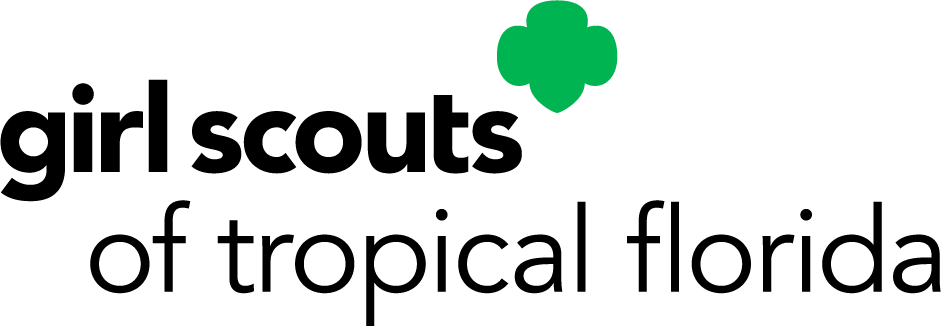Gold Award Girl Scout Spotlight: Amelia M.
Inspired by a middle school project, Amelia launched plastic smART in high school. This multifaceted program tackles marine debris. Her K-12 curriculum combines beach cleanups, art creation, and solutions for reducing plastic use. Partnering with Miami EcoAdventures, plastic smART became a field trip at the Marjory Stoneman Douglas Nature Center. With Royal Caribbean, the curriculum is translated for Haitian students. Amelia also uses a website, Instagram, and an art installation to spread awareness.
Amelia is a Girl Scouts of Tropical Florida Changemaker.
What College do you plan to attend? Have you decided on a major?
I am still in the process of deciding which school to attend because I am not yet a senior in high school.
Other than the Girl Scout Gold Award, what other awards have you earned?
I was chosen as a delegate to represent South Miami in Tallahassee this summer. I am also receiving a Proclamation from the City of South Miami based on my delegation for Girls State, but I'm listed on the agenda as a Girl Scout. Additionally, my project was featured in the South Miami Community Newspapers.
What is the title of your Gold Award project?
plastic smART: small changes, big impacts
Tell us more about your project and how you completed it.
In my sophomore year of high school, I launched plastic smART, inspired by a Girl Scout take-action project from middle school. During that project, my troop learned about a local issue: sea turtles ingesting microplastics. To address this, we designed and built sand sifters to remove tiny plastics from the beach sand. These sifters were donated to beach parks for use during clean-ups. This project sparked plastic smART, a multi-faceted program tackling the global marine debris crisis. I created a K-12 curriculum to educate students about the issue. It features beach cleanups, creating ephemeral art projects, and brainstorming ways to reduce plastic use in our oceans.
Partnering with Miami EcoAdventures, plastic smART is now a field trip option at the Marjory Stoneman Douglas Nature Center for teachers and youth groups. Additionally, with Royal Caribbean's help, plastic smART is being translated into Creole and French for use with students in Haiti. They also assisted with part of the art installation.
To further publicize the project and highlight other marine pollution advocates, I created a website and Instagram account. These platforms aim to educate followers about plastic issues. Finally, I created an art installation made from marine debris that doubles as a plastic collection bin. The installation features a QR code linking visitors to more information about the project and plastic pollution.
Why is this project important to you? What gave you the inspiration to approach this topic the way that you did?
For as long as I can remember, I've adored the outdoors, fostering a deep passion for the environment. Growing up in Miami, with its countless beaches, I was captivated by the ocean and its marine life.
Early on, I learned about the threats our oceans and animals face due to human impact, particularly the overwhelming amount of marine debris. Over the years, I participated in countless cleanups. However, I knew tackling this issue alone wasn't enough. Real change requires inspiring others to be part of the solution. Believing education is a powerful tool, I partnered with Miami EcoAdventures to create an engaging curriculum on marine debris, now a field trip option. As an artist, I leverage art's power by creating an installation that educates the public about the global plastic crisis.
What was the biggest challenge you faced and how did you overcome it?
There were many challenges along the way, which is expected when you work on a project for almost 2 years. But the biggest challenge was my own anxiety! Over time, I learned to recognize my triggers and discovered that sometimes walking away and taking a break is essential. I developed new strategies for handling stress, learned how to better manage my anxiety, and set healthy boundaries.
Working on this project taught me to pay close attention to my mental health and how to regulate it more effectively. By the end, setbacks that would have been catastrophic at the beginning felt like just curveballs.
How does this project contribute to your future goals?
Last summer, I spent part of my time in Guatemala working with the San Lucas Tolimán Mission. Their reforestation center was incredibly inspiring. However, the plastic crisis was evident even in the small rural town we stayed in. This experience solidified my desire to return and help with these issues in the future. Witnessing the impact firsthand made it clear that plastic pollution is not just a global problem, but a social justice issue as well. To pursue this passion, I plan to get a degree in Environmental Science or Marine Biology, aiming to turn this passion into a future career.
What did you learn about yourself while completing your project?
This project solidified my strength and resilience. While anxiety can challenge my confidence at times, I learned I'm far stronger than I initially thought. My approach may require breaks and different stress management techniques, but passion fuels my ability to follow through.
What did you learn about your community while completing your project?
"Community" has many layers. I met a passionate network of people and organizations who share my concern. We'll stay connected to create bigger change. However, others care but feel helpless. This highlights the importance of better education and outreach. Finally, this project revealed a wider support system than I realized. My "village" showed up when needed.

